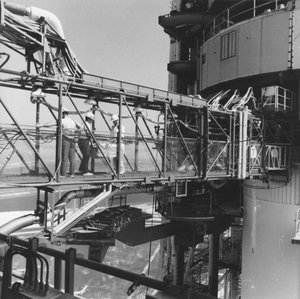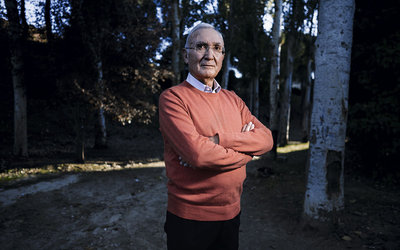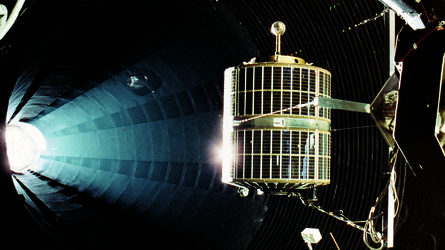On this day: 50 years ago
19 July 1969
At 3:00 a.m. CEST, Mission Control tells the crew goodnight. At 4:12 a.m. the velocity of spacecraft has slowed to 0.9 km/s as it enters the Moon's sphere of gravitational influence.
11:58 a.m. The astronauts call Mission Control to ask about scheduled course correction and are told it has been cancelled. They are advised to go back to sleep.
1:32 p.m. Mission Control rouses the crew to start on breakfast and housekeeping chores.

3:42 p.m. Armstrong reports: “The view of the Moon that we've been having recently is really spectacular. It about three-quarters of the hatch window and, of course, we can see the entire circumference, even though part of it is in complete shadow and part of it’s in earth-shine. It’s a view worth the price of the trip.”
5:58 p.m. The crew is informed by Mission Control that they are ready for the Lunar Orbit Insertion (LOI) engine burn to slow the vehicle so that it can be captured by lunar gravity. The Flight Director reports: “Apollo 11, you are go for LOI.”
6:13 p.m. Spacecraft passes completely behind the Moon and out of radio contact with Earth for the first time.

6:28 p.m. The spacecraft main engine is fired for about six minutes while still behind the Moon.
11:57 p.m. Armstrong and Aldrin crawl through the tunnel into the Lunar Module to give it another check. The spacecraft is now orbiting the Moon every two hours.
More information:
ESA is joining the international space community in celebrating the 50th anniversary of humankind first setting foot on the Moon and paying tribute to the men and women who took part in this endeavour, some of whom went on to work in later NASA, ESA and international space programmes. Today, ESA and our partners are busy preparing to return humans to the surface of the Moon. During this week, we will focus on the different lunar missions being prepared by ESA and highlight of some fascinating European contributions to lunar exploration.















